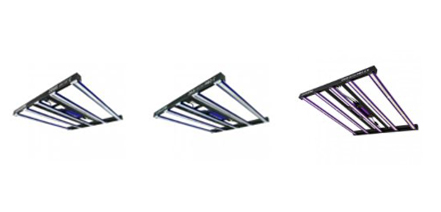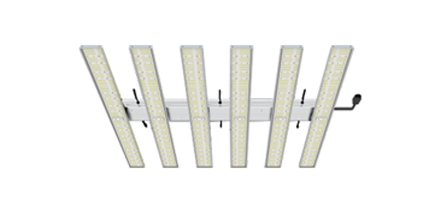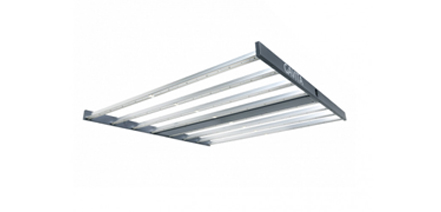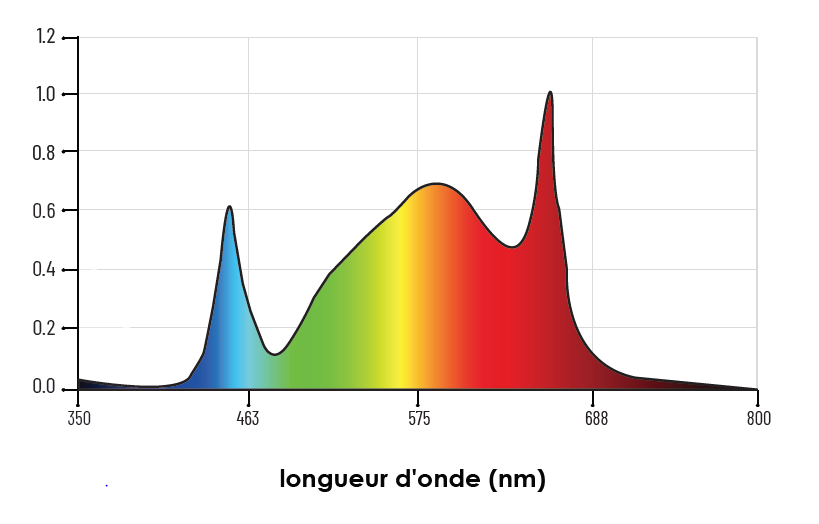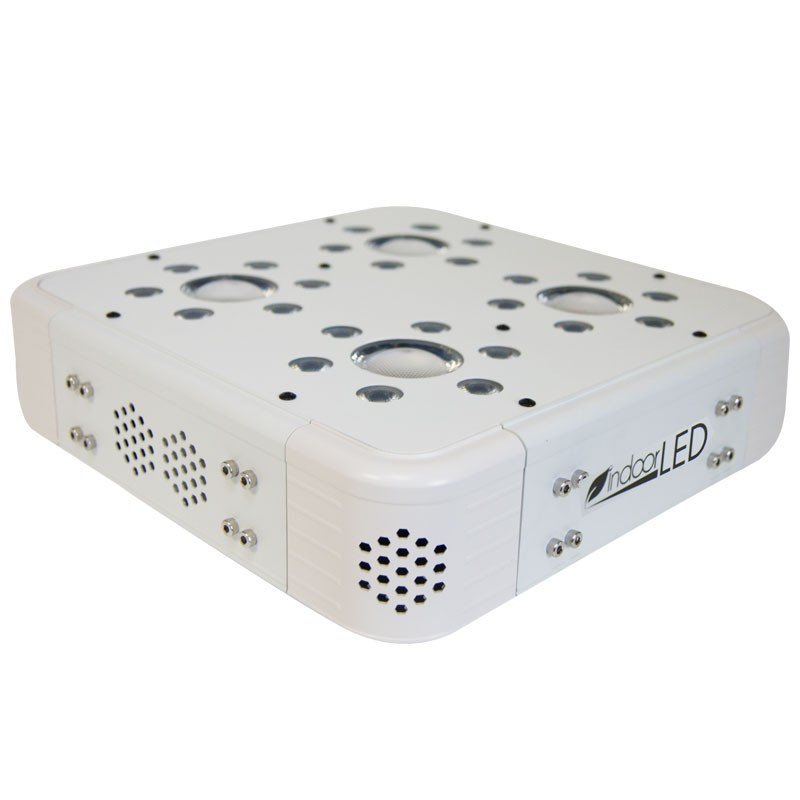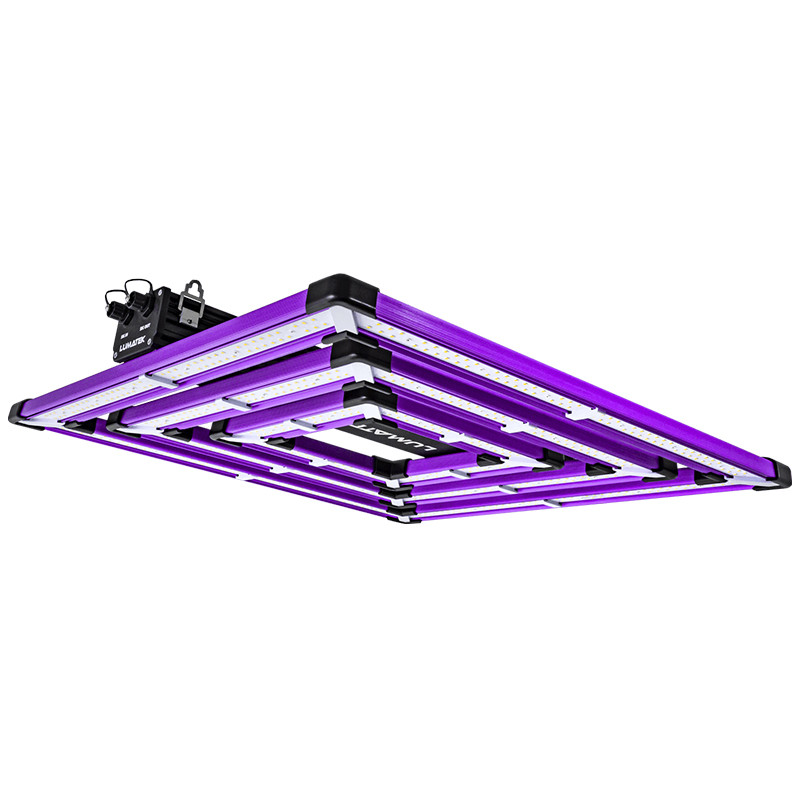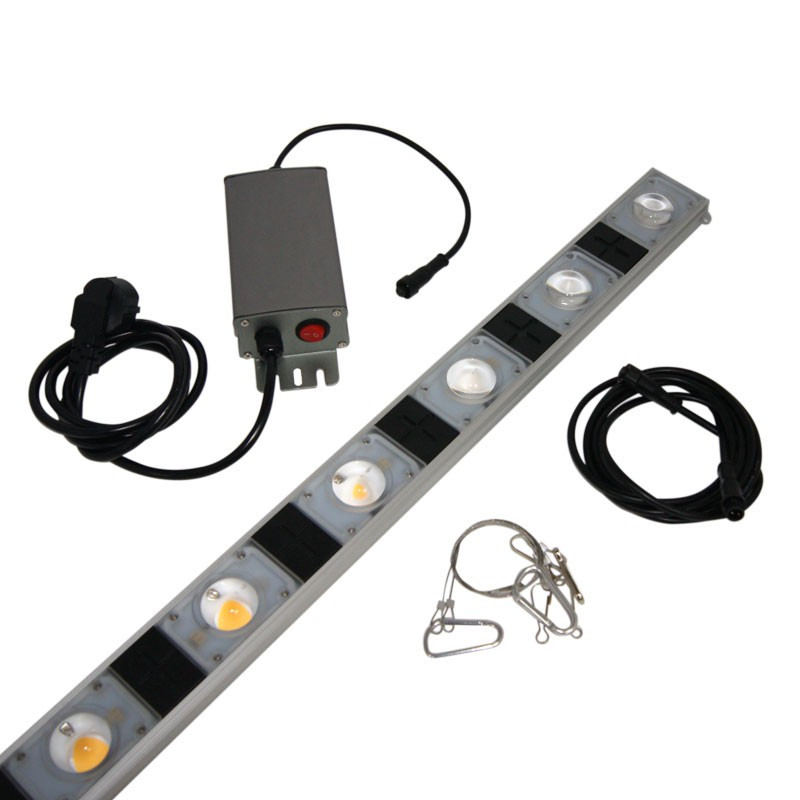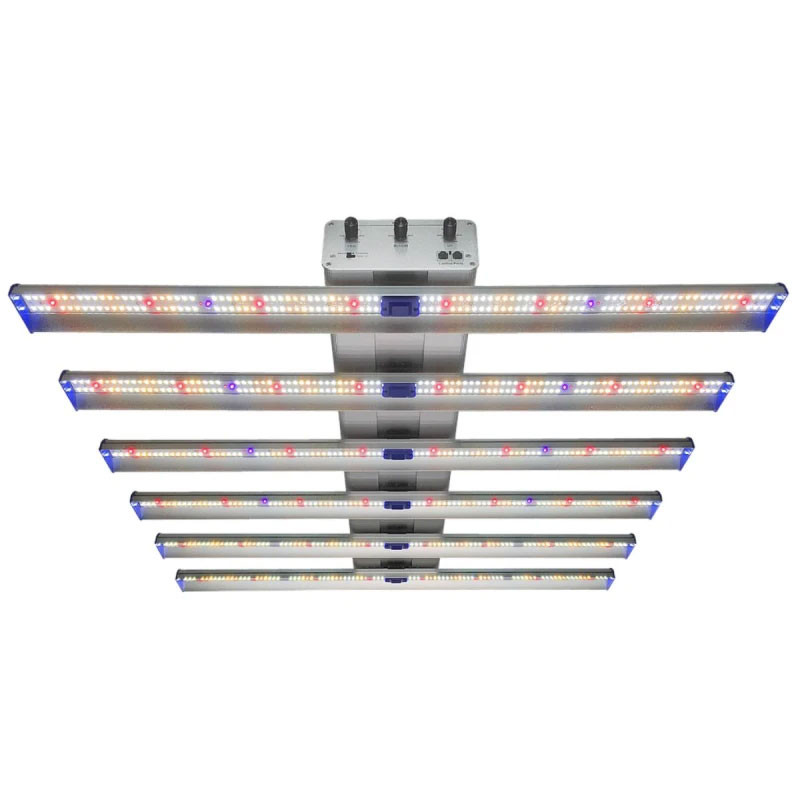Visit LED horticultural lighting of the future
Light-emitting diodes (LED) is thelighting of the future. LEDs have everything it takes to become the artificial light of tomorrow. This technology is constantlyinnovating: before, it was only used for growth and germination, now it's widely used for flowering.
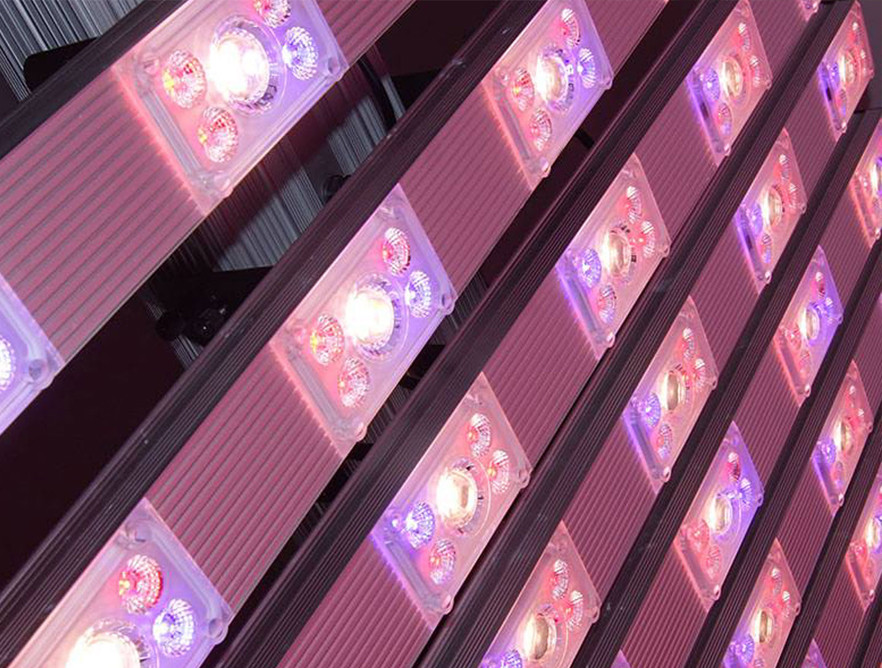
What is horticultural led technology?
A specialized led for the cultivation of plants in all their processes, from the vegetative phase to the end of flowering. LEDs are ultra-powerful light-emitting diodes, particularly in the horticultural sector. This technology continues to evolve day by day throughout the world, and the cost of LED equipment is tending to fall, which is good news for the consumer and the grower or indoor gardener looking for outstanding performance. Led lighting first appeared on the French market in 2007, when we discovered Led panels more suited to the vegetative growth phase, but since then there has been a marked evolution in the results achieved for flowering and fruiting of flowers, fruit, vegetables, herbs and other plants.
This lighting technology is designed for all types of plants, from orchids and bonsais to palms, cacti and carnivorous plants, as well as lights for plant walls and plant pictures. Find the right model for your needs in our online store.
There's a wide range of Led lighting on the market, but not all shops are up to the task of advising you or directing you towards the Led lighting model best suited to your needs.
It's not easy to make a choice from all the offers on Amazon, Wish and other small websites, which very often supply old-generation LEDs, or low-end products, admittedly at rock-bottom prices, but unlike them we supply high-performance LED lighting fixtures. We don't lie about wattages, or PAR per M2, and our fixtures come with a no-surprise guarantee at unbeatable value for money on the market.
In our guide to buying your Led horticultural lighting, we'll try to help you make the right choice for your indoor or greenhouse needs.
Discover all the criteria and complete technical data sheets for our products.
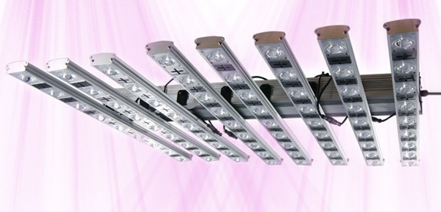
Why buy Led horticultural lighting?
Led lighting is a great way to promote the growth of all types of plants, offering superior quality light to HPS, MH, CFL, CMH or even double ended Hps lamps, because LEDs are perfectly adapted to photosynthesis processes.
In short, it's necessary to provide light representing the sun, which enables plants to photosynthesize, transforming carbon dioxide and water into carbohydrates (sugars, Brix). Chlorophyll absorbs the blue and red components of your lighting, giving your plants' leaves a green color.
LEDs enable your plants togrow more efficiently, flower more abundantly, bud larger, denser and healthier. The results on your crops will leave you speechless and impressed with the harvests.
Led technology also acts as a root stimulator, enabling better rootlet development, which means more productive flowering because the more developed the root mass, the more abundant the flowering.
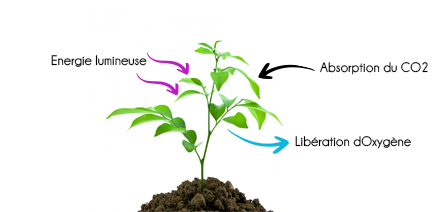
What are the advantages of buying Led lighting?
There are plenty of advantages compared to other horticultural lighting systems, many of which produce intermittent light without being visible to the naked eye. Led lighting technology produces a continuous stream of light much more representative of natural sunlight.
Led lamps and bulbs are the most economical on the market, because unlike an HPS lamp, which also produces heat, a Led only consumes electricity to provide light. This makes it easier to manage your growing spaces and avoid overheating, which is often more complicated in winter, when you need a supplementary heater to regulate the temperature for your plants. With horticultural LEDs, it's easy to choose your light spectrum and offer the color of your choice, obviously adapted to your cultivation phases. The colors most commonly used in horticulture are blue for growth and red for flowering, and Full Spectrum models integrate infrared and ultraviolet to optimize yields.
With LEDs, avoid waste and save money on your electricity consumption. Another significant advantage is the lifespan of LED lighting, which is around 3 times longer than the average for traditional lighting .
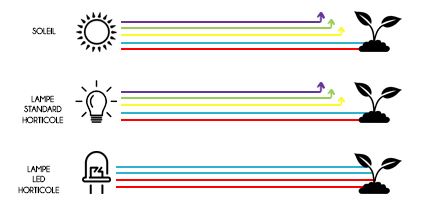
Why not buy them?
To date, there aren't any, and if we look hard enough we'll find that there are nothing but advantages.
How to choose Led horticultural lighting?
On our online store find the biggest Led brands at the best prices on the web.
Discover our top Led brands
Lumatek Led
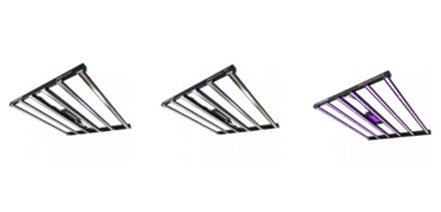
Zeus LED 600W 2.3 ?mol/J - Zeus LED 600W 2.6 ?mol/J - Zeus 600W Pro
Zeus Compact 465W - Zeus Pro Compact 465W - Zeus 2.9 Pro Compact 465W
Indoor Led
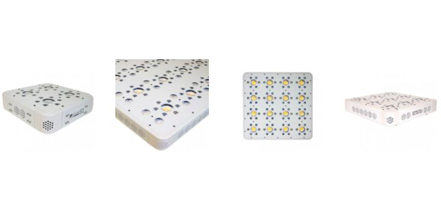
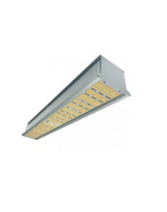
HPS killer 120W - HPS Killer 270W - HPS Killer 480W - HPS Killer 700W - LED Barre HPS Killer 310W
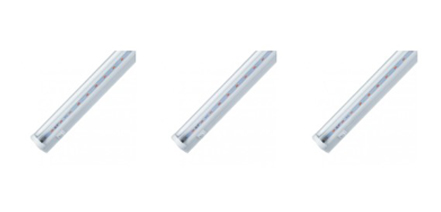
LED Tube T8 8W 60cm - LED Tube T8 13W 90cm - LED Tube T8 16W 120cm
Hellion Led
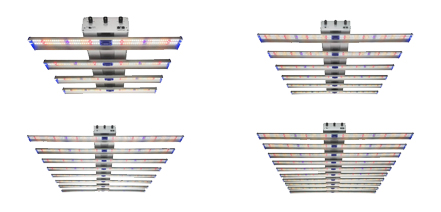
Hellion LED VS3 250W / 4 Bars - Hellion LED VS3 510W / 6 Bars - Hellion LED VS3 700W / 8 Bars - Hellion LED VS3 / 1000W (coming soon)
Gavita Led
Advanced Star Led
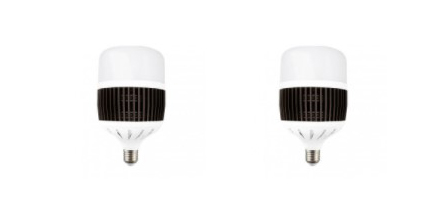
Bulb Ledstar 50W 2700K E40 - Bulb Ledstar 50 6500k E40
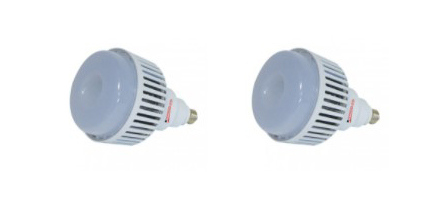
Growth LED 100W E40 - Growth LED 120W E40
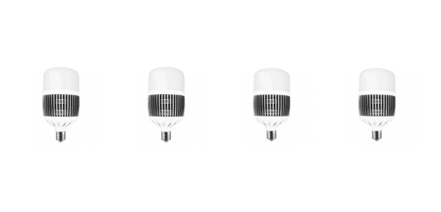
Bulb 100W 2700k E40 - Bulb 1000W 6500K E40 - Bulb 150 2700k E40 - Bulb 150W 6500k E40
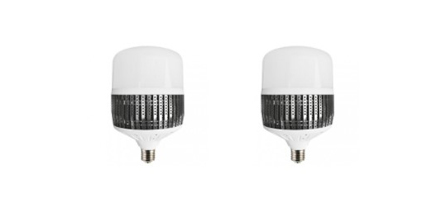
Bulb 200W 2700K E40 - Bulb 200W 6500k E40
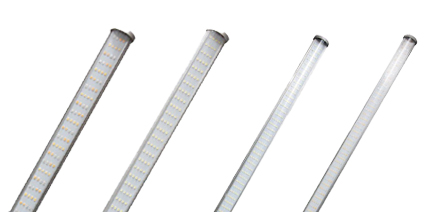
Led bar 42W 95cm EU BLOOMING - Led bar 42W 95cm EU GROWING - Led bar 26W 55cm EU BLOOMING - Led bar 26W 55cm EU GROWING
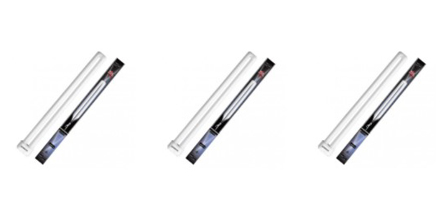
Neon pl 55W 2100k - Neon pl 55W 6500K - Neon pl 55W - 9500K
Secret Jardin Led
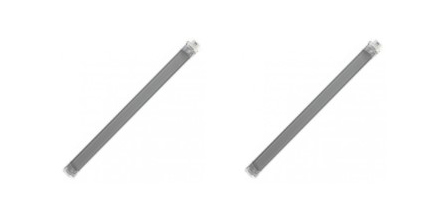
TLED 26W 55cm UE GROWING - TLED 26W 55cm BLOOMING
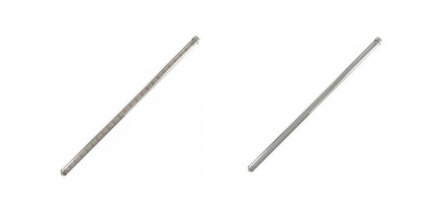
TLED 42W 95cm UE BLOOMING - TLED 42W 95cm UE GROWING
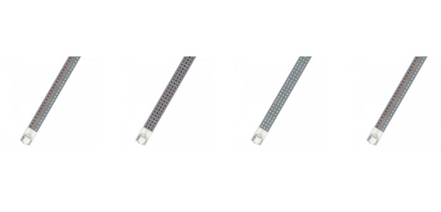
COSMORROW LED Ultraviolet 20W - COSMORROW LED Infrared 20W - COSMORROW LED Growth 20W - COSMORROW LED Bloom 20W
Making your choice depends on power, size, dimension, overall height and, of course, price, which you should always take into account when making future purchases. Prices often depend on the quality of the product, the LEDs used and the brand Osramphilips, and some models are compatible with control boxes to control several lights at the same time, or for different growing rooms at the same time. High-performance LEDs use aluminum heat sinks and fans to cool the horticultural lighting fixture. Depending on the model, a range of options are available, including dimmers to reduce or increase the light output as you wish or as your plants require, or control units to select only the spectrum required for growth, cutting or flowering, or switches to add ultraviolet or infrared light.
For Led lighting, a good heat sink can make all the difference.
The most important points in selecting your Led horticultural lighting system are price, warranty, integrated options and, above all, the power of the system and the PAR per M2, i.e. the rate at which light is absorbed by plants. Don't forget to buy lighting adapted to your surface area or grow room.
What is P.A.R.?
It'sthe PPFD, the photosynthetic photon flux, the value used to measure the light absorbed by plants. This measurement is expressed in µmol/m2/s. To simplify the explanation, it's the number of photons that are sent over a surface area of one square metre every secondcisyou'll need a Quantum meter or a spectrometer to obtain a qualitative and representative measurement for your abundant harvests.
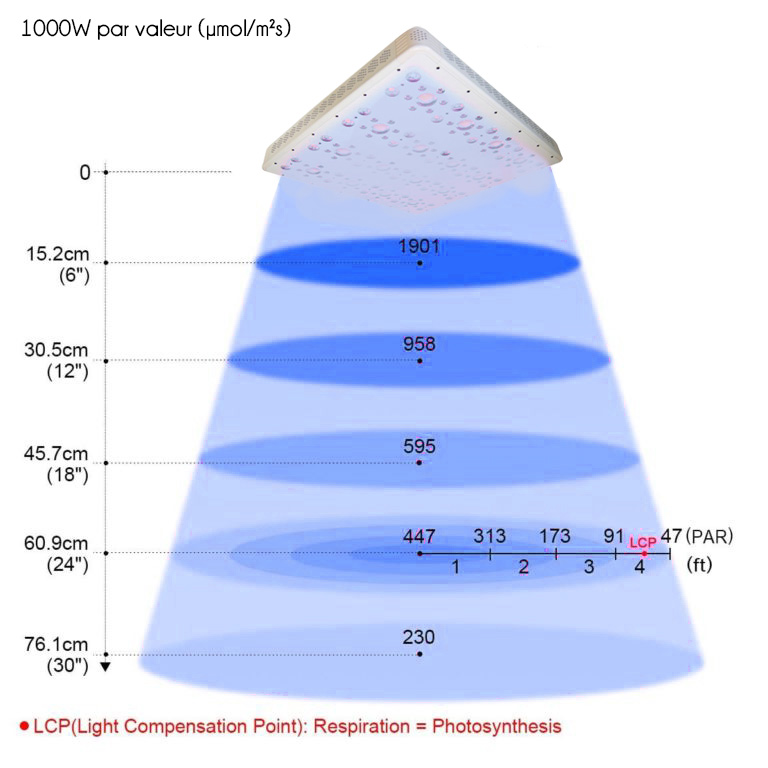
On our Indoordiscount online store, the Led Horticole specialist dedicated to plant cultivation, you'll need to examine our complete technical data sheets with PPFD tables, enabling you to analyze and compare the different models in our range and easily find the model best suited to your growing space. All plants are different, so don't hesitate to rummage through our catalog.
Each plant variety has its own specific needs, and some varieties havelimited PPFD requirements. See below for a table of some plant varieties.

Depending on the plants grown, you'll need sun, shade or half-shade to obtain the necessary exposure to natural light represented by Led Horticultural lighting.
Example:
Lettuce 100 µmol/m2/s
Tomatoes require a minimum of 170 µmol/m2/s
Hemp requires around 200 µmol/m2/s
Lettuce will grow easily with a 15W LED.
For tomatoes, you'll need a 30w LED for a plant.
For hemp or Cannabis Sativa L, a 50w LED will bring you an abundant harvest.
The light spectrum visible to the naked eye is between 400nm and 700nm, below 400nm it's ultraviolet and above 700nm it's infrared.
Light spectrum and absorption by plants Discover the table below:
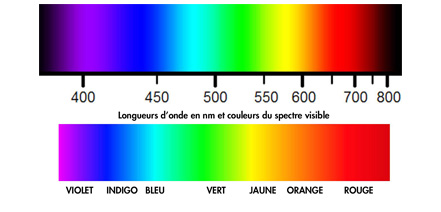
When you combine all the wavelengths in the same light spectrum, you get a rainbow effect, as sunlight splits into water droplets, allowing the arc to appear.
The plant uses only certain parts of the light spectrum.
In the growth phase, the wavelengths used by the plant tend to be blue and violet, while in the flowering period, the wavelengths absorbed are red and orange. Easy to understand: Blue for growth, Red for flowering. Green or yellow light is very difficult for plants to absorb, which is why we recommend using a green torch or green light, so as not to disrupt growth cycles: 18 hours of daylight and 6 hours of night, whereas in the flowering cycle, 12 hours of daylight and 12 hours of night, this avoids disrupting the plant cycle, thus preventing stretch or the provocation of hermaphroditic plants.
Providing the right blue light during the growth phase, i.e. between 400 and 500nm, will enable the development of more beautiful green leaves, a better root system and shorter internodes, as the plant doesn't need to stretch to get light or sun.
For the flowering phase, the wavelength is between 620 and 780nm, i.e. red light.
What types of horticultural LEDs are available on the market?
Growth LED lamps for the vegetative phase.
Flowering Led for floral production.
Mixed growth and flowering Led lamps.
Led lamp with spectral, color and wavelength management module.
What functions do you want on your lighting fixture? In general, the Led horticultural market in shops or online sales offer mixed horticultural Led, these models will suit most indoor crops guaranteeing your plants the best light spectrum during all phases of growth and flowering.
Example of spectrum : Zeus PRO LED
The area you want to light.
Choosing your Horticultural LEDs depends on the amount of light you want to cover, and on the angle of the lenses, which vary between 20° and 160°. So, like in geometry, the wider the diffusion angle, the greater the coverage of the growing area. In order to limit light loss on the sides of your grow room, we recommend you select a slightly larger light fixture to obtain better coverage of the cultivated area. If you have the means to do so, please calculate beforehandcisif you have the means, calculate the surface area to be lit beforehand.
Electrical connection of a Horticultural LED.
The simplicity of Horticultural LEDs is that they are supplied with a 220-volt plug and can be plugged directly into a wall socket in your house, apartment or other premises. Unlike HPS or MH lamp kits, which require a transformer or magnetic or electronic ballast, Drivers are integrated directly into the horticultural LED modules.
Led horticultural driver: what's the best led horticultural driver?
Meanwell is the world leader in premium-quality drivers and transformers, offering the best voltage stability and the greatest impact on the life of your horticultural LEDs.
Cooling systems for horticultural LEDs
In the horticultural lighting sector, heat is a very important issue!
It's true that horticultural LEDs produce less heat than HPS, MH or CMH lamps, and this is a major advantage, because as soon as you increase the power, it's imperative to dissipate the heat from the lighting fixtures to obtain a longer life for the LEDs and avoid temperatures rising above the plants.
There are two types of cooling: passive and active dissipation.
What is active dissipation?
This technology uses fans to evacuate heat from around horticultural lamps, with the disadvantage of being noisy, but on well-made lighting it remains relatively quiet.
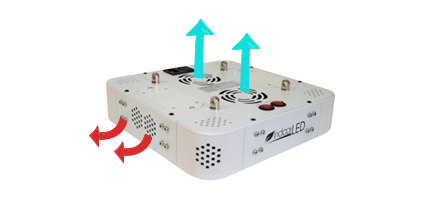
What is passive dissipation?
As the name implies, passive dissipation uses no external elements to cool the device, with some adapting a metal part to dissipate the heat. On top-of-the-range models, you'll find vents cast directly into the mass, providing the best possible cooling for your LED horticultural lighting fixtures.
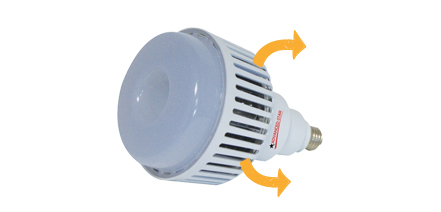
Sealing a Horticultural LED
Some plants, such as tropical plants, require high humidity levels of between 60% and 85%. In these growing conditions, it's best to choose a lighting fixture that's resistant to high humidity levels, to ensure the safety of your installation.
Lighting protection ratings :
IP68 for total protection against dust and water.
IP64 for resistance to splashing water.
What types and shapes of led can I buy?
Find Led lighting models in the form of Led Panels, Led Spotlights, Led Bulbs, Led Neon Bars, Led Spotlights.
LED neon bar:
Use for clone production, cuttings, germination of seedlings or seeds.
Led spotlights and bulbs:
You can modulate or create your own installation and configuration of Led modules to adapt to growing spaces that are sometimes difficult to equip.
Led panels :
Square, rectangular or modular Led panels with the HPS KILLER range manufactured by Indoorled.
Led spotlights :
Ideal for professionals who want to obtain a broad spectrum of light.
Why use a horticultural LED in a grow room?
When you install a grow room, there are a number of parameters to control: lighting, ventilation, odor filtration with an activated carbon filter, a mineral or organic substrate and fertilizers. In order to be able to control your growing at 100%, you become Mr. Sun; with your horticultural LED, you'll represent the sun: the source of light needed to grow the plants in your grow room. These grow chambers are totally adapted to the development of plants in their growth and flowering phases. Ideal for indoor growing.
How to assemble and install your grow room? Watch the video below
Where to buy Led horticultural lamps and lighting?
Visit our online store, the specialist in indoor cultivation, which offers you the widest choice of high-efficiency, high-output Led horticultural models on the market. Indoordiscount delivers your horticultural LEDs by express delivery 24h/48h by chronopost in France and Europe.

